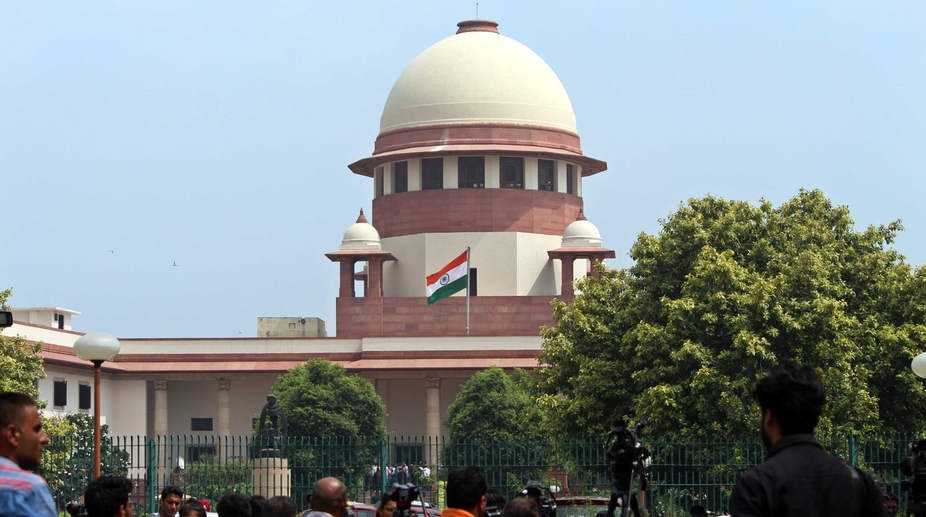Will knock the door of SC if rights of Himachal Pradesh not given by the Centre: CM
Chief Minister Sukhwinder Singh Sukhu has said that he will meet the Union Ministers to release the aid to Himachal under the Post Disaster Need Assessment (PDNA).

Supreme Court of India (Photo: IANS/File)
The Supreme Court on Friday declined an interim stay of the Karnataka High Court order setting aside the 2014 Rules mandating that 85 per cent space on both the sides of a packet of cigarettes or other tobacco products carry pictorial warning on their harmful effects.
The bench of Chief Justice Dipak Misra and Justice Sanjay Kishan Kaul noted that the December 15 High Court judgment was not available as it has not been uploaded on the High Court website so far.
Advertisement
“…, we think it appropriate that the matter should be listed on Monday, 8th January 2018. In the meanwhile, the High Court shall upload the judgment,” the court said directing its registry to “communicate the same to the Registry of the High Court of Karnataka … to do the needful in the matter”.
Advertisement
The court however, said that those engaged in tobacco manufacturing and industry would not later claim any equity on account of it not staying the operation of the High Court order.
“Needless to emphasise, we have not passed any interim order today as we do not have the benefit of reading the judgment of the High Court and that is no ground on the part of the respondents to advance a claim in equity”, the court said in its order.
Directing the next hearing of the matter on January 8, the court asked the High Court to upload the judgment by then.
The Central government had, in 2014, amended the Cigarette and other Tobacco Products (Packaging and Labelling) Rules prescribing that 85 per cent space on the both sides of the tobacco packaging would be covered with the statutory warnings telling consumers that cigarette smoking and tobacco chewing was harmful to health.
The amended Rules came into force from April 1, 2016.
The Cigarette and other Tobacco Products (Packaging and Labelling) Amendments Rules, 2014 were framed under the Cigarette and Other Tobacco Products (Prohibition of Advertisement and Regulation of Trade and Commerce, Production, Supply and Distribution) Act, 2003.
Prior to 2014 amendment of the Rules, the pictorial warning was limited to the 40 per cent space of the packaging and that too to one side only.
The top court was moved by Allahabad-based senior lawyer Umesh Narain and NGO Health for Millions challenging the December 15 High Court judgment by which it had held that 2014 amended Rules were arbitrary and unconstitutional.
The matter was heard around 3.30 PM after senior counsel Anand Grover appearing for the NGO and lawyer Aishwarya Bhati, appearing for Umesh Narain, had earlier in the morning mentioned the matter for an early listing.
The High Court order, the petition by Umesh Narain said, will have the serious and numbing impact on India’s fight against tobacco, as it is regressive, retrograde and jeopardizes future generations of the country having maximum number of youth in the world.A
Grover, who appeared for the NGO, said that the world over, the trend was on increasing the space of the warning but the High Court ordered reducing it.
The High Court order had come on a batch of petitions by various tobacco manufacturing companies who had challenged the 2014 modified rules mandating that the health warning should cover 85 per cent of the tobacco packaging space.
The petitioners told the top court that the implementation of Regulations mandating 85 per cent pictorial warning on both sides of tobacco products was a culmination of an extremely long, cumbersome and excruciating fight by public heath activists and people whose life and family had been ruined by Tobacco, against the mighty tobacco industry.
Graphic pictorial warnings which occupy 85 per cent of the package on both sides will create awareness not only amongst the existing consumers of tobacco products about the grave health risks involved but will also dissuade the younger generation from becoming tobacco addicts, the petitioners told the court.
Advertisement